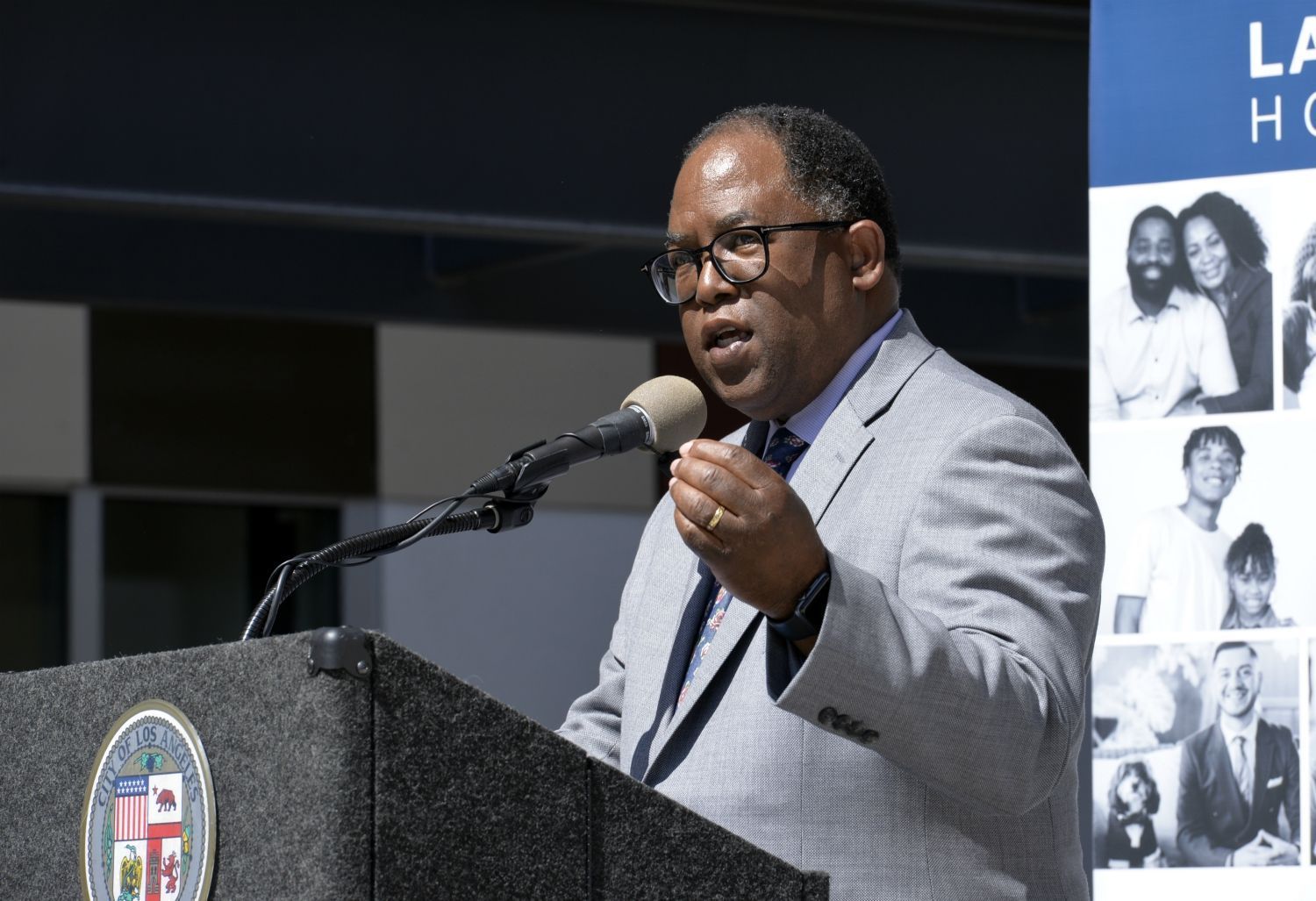USA v MRT - Round 3

A David v. Goliath Story
If anything, the last three weeks at trial in a match that pits a proverbial David (Mark Ridley-Thomas) versus Goliath (the might and resources of the United States government) has demonstrated that those with gumption, will and faith can fight the giant to a draw, and possibly slay him.
This week, Mark Ridley-Thomas’ Defense team discredited the government’s case with the speed and efficiency of a stone from a slingshot aimed right at the head of the giant. In two days, the jury heard from 18 witnesses called by the Defense, in contrast to the clumsy giant’s repetitive, plodding seven days of testimony from 9 witnesses.
The Defense presented its theory of the case. And its closing argument was masterful. Daralyn Durie, MRT’s lead attorney explained to the jury that two of the issues the government claims were at the heart of an alleged corruption scheme were proposals to establish a “Probation University '' and the Vermont Ave. Re-entry Center with the assistance of the School of Social Work were in the works and/or had been supported by MRT for years. So, too, was a Telehealth contract extension he voted for after the alleged conspiracy began.
Durie skillfully used the testimony of the government’s own star witness and the timeline he prepared to demonstrate the sloppy investigative techniques and selective use of information in its own discovery to undermine the credibility of the case. The inconsistency in the testimony by FBI Special Agent Brian Adkins necessitated its own jury instruction.
REPRESENTING WHILE BLACK
The trial provided observers with a glimpse into MRT’s work and style. He is not afraid to rely on the expertise of others. He solicited experts in the field of social work and children’s welfare to gain insight into the troubled County Department of Children and Family Services (DCFS). It was his 2013 motion that established a Blue Ribbon Commission (BRC) to explore reforms for the troubled agency. It was his 2014 motion that called on the County to implement the BRC’s recommendations, one of which was to use innovations such as telehealth technologies to make services to children under the County’s care more accessible. It was his advocacy that resulted in a sole source contract to pilot the project by deploying graduate students at the School of Social Work to help staff the effort.
The telehealth initiative exemplifies a methodology MRT has used over the course of his career. His analysis of the social, economic and political challenges the government should address is filtered through the African American experience which values inclusion and self-determination. His approach emphasizes the agency of individuals and empowerment in pursuit of the greater good. Unwilling to linger on what his district does not have, he has always taken an asset-based approach to address issues and recognize opportunities. With this way of thinking, the focus is always on identifying community-based resources with which to work. He recognizes that public policy development and implementation is an iterative process that unfolds in a measured, step by step way, over time, and it should not be done in the vacuum of a government building.
Establishment of the one stop, multi-service probation re-entry center is another example. The Vermont Ave. Re-Entry Center was his initiative. It began during the planning and construction of the K-line. His economic development team was eager to identify transit-oriented development opportunities along the Crenshaw/LAX alignment during the early stages of construction. The County-owned property at the intersection of the Expo (E line) and Crenshaw-LAX (K line) was the site of a decrepit, sterileProbation office. By renovating and repurposing the existing underutilized County-owned building on Vermont Ave. and Exposition Blvd., the old Probation property on Crenshaw could be made available for mixed commercial and residential use while taking optimal advantage of the mobility options afforded by public transit.
The relocation of the Probation office to Vermont Ave. permitted MRT with the opportunity to enhance service delivery to the largely Black and Brown probationers under the County’s supervision. A one-stop re-entry center also coincided with State efforts to realign responsibility for supervision of low level offenders in its custody to counties at precisely the moment mass incarceration policies were coming under increased scrutiny and public criticism.
Other innovations MRT’s office advanced during the same time to expand access to mental health services included the MLK Urgent Mental Care Clinic, a facility (short of an overcrowded hospital emergency room) that gave law enforcement a place to take residents experiencing a mental health crisis. While there, the resident can decompress under the care and supervision of qualified mental health therapists and social workers. “This is what diversion looks like,” MRT would tell anyone who would listen. This is criminal justice and health care reform. This is representing while Black.
Creative solutions and pursuit of collaborative approaches to housing, rehabilitation of the formerly incarcerated, access to mental health services and use of the intellectual and human resources available at a major research university constitute a threat to the status quo. When seen from this perspective, coincidental communications MRT had with Dean Flynn and USC were the natural by-product of moving his policy agenda.
QUALITY STAFF
The professionalism and poise of MRT’s staff came into view as well. Four highly credentialed and articulate (County) Second District 2 staff explained clearly the process by which an innovative idea becomes a service delivery program. They described in detail how the Probation University, Vermont Ave. Re-entry Center and Telehealth projects were established. MRT’s defense witnesses included two Supervisors, Janice Hahn and Sheila Kuehl, former County Chief Executive Officer (CEO) Sachi Hamai, and Department of Mental Health (DMH) Chief Deputy Director Gregory Polk. No one testified that they felt pressured or were alarmed by MRT’s actions or support for the programs at issue. Their testimony and apparent ability to connect to the jury stood in marked contrast to the failure and unwillingness of the Prosecution to call any witnesses from the County.
MRT’s LAST ELECTION
Does the jury get it?
The judge seems to. In the final days of the trial, Judge Dale S. Fischer’s rulings from the bench took on a more decidedly neutral stance. Some would even say that they were more favorable to the Defense. She grew increasingly impatient with the repetitive nature of the government’s case, at one point calling the Prosecution’s line of questioning “boring.”
Did the Defense do a sufficient job of advancing an alternate narrative capable of sowing enough reasonable doubt to overcome a prosecution by incessant repetition and circumstantial evidence?
One hopes. The failure of the FBI to consult MRT or County representatives, or properly review the contracts and underlying budget during the investigation, point to the government’s failure to impartially and thoroughly investigate the most fundamental facts of the case. One might think these failures provide jurors all the reasonable doubt they need to acquit.
This is probably MR T's last and arguably most important election. Will twelve jurors vote for David or Goliath?
MRT’s fate is in their hands.

